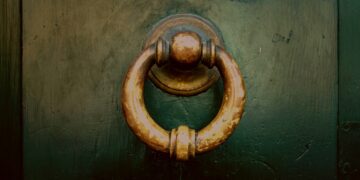Discover The Value Of Your Antique Furniture
It’s important to know the value of your antique furniture before you get started with restoration. You can do this by using an antique price guide, researching its value online, or checking with an appraiser. It’s also wise to look at similar pieces that have been sold recently in order to understand how valuable your piece is.
I think it’s important for you to understand how valuable your piece will affect how you restore it and what kind of materials you might need. For example, if there are no other examples out there that are similar then chances are good that the more expensive options should be considered first (like a new veneer instead of just refinishing).
Examine The Condition Of Your Antique Furniture
Before you begin your restoration project, it’s important to check the condition of your antique furniture. This can be done by running your hands over the wood and looking for any broken pieces or cracks in the joints. You should also look for loose parts and missing screws, as well as any damage to the finish or wood itself. If there are any repairs that need to be made prior to painting or staining, this is a good time to make them too!
If you have any doubts about whether or not your antique furniture has been refinished in the past (or simply want confirmation), there are a few ways that you can test for this:
Remove The Previous Finish
Once you’ve got your furniture in the shop, it’s time to start stripping. The first step is to remove any remaining finish from the piece. There are a few different ways you can do this; here are some of your options:
- Use a chemical stripper. Chemical strippers usually come in liquid form and will slowly eat away at the old finish over time. This process can take several hours or even days, depending on how thick the old finish is! They’re great if you don’t want to spend much time getting rid of it by hand—but be careful not to spill any on yourself!
- Use heat. One way to speed up this process is by using heat instead of chemicals (like with an electric sander). Simply plug in an electric sander and watch as it melts away all that old paint; just make sure not too much heat builds up so that it damages your furniture! (If at all possible,) try using low-speed settings so that there isn’t too much friction between tool surfaces and woodwork.”
Repair Damaged Sections Or Parts To Restore Antique Furniture
Sometimes restoration is as simple as replacing a broken piece. If the frame of a chair is damaged, for example, you can find new ones that look just like the original at any home improvement store or craft supplier. If you’re having trouble finding replacement parts or pieces of furniture that match your old one perfectly, try making them yourself! This can be easier than it sounds—just ask around and see if anyone has old tools lying around they don’t use anymore. They might be happy to let them go so they don’t sit unused in their garage forever.
If these options don’t work out for some reason (or if it turns out that the damage is too severe), consider giving up on restoring your antique altogether and using it for something else instead—maybe even making it into art! A beautiful piece of furniture may still be useful even without its original purpose anymore; think about what kind of beauty comes from an object’s history rather than just its function when deciding how best to preserve an antique today.”
Select An Appropriate Finish For The Antique Furniture
The finish you choose to restore your antique furniture is one of the most important decisions you will make. Not only will it affect the overall look and feel of the piece, but it can also determine how easy or difficult it is to maintain.
Before choosing a finish, take into account a few factors:
- The original finish should match as closely as possible. If you’re restoring an old chest of drawers from the 1800s, for example, look for paints that were used in that era. If you’re restoring a piece made in Japan during World War II, try to find something similar in color and texture so as not to disrupt its authenticity or historical significance.
- Finishes should be appropriate for both the age and style of your antique furniture piece—if something was made before 1930 (like this mahogany secretary desk), chances are good it won’t have been finished with polyurethane varnish (which wasn’t invented until around 1924). Likewise, if something was made after 1945 (like this pair of French Louis XVI-style chairs), then shellac would probably be completely inappropriate for its aesthetic needs because this thin coating doesn’t provide much protection against water damage or wear-and-tear over time like modern lacquers do.
- Finishes should complement their intended purpose(s). Wood flooring needs different finishes than wood paneling does; metal tables need different finishes than wood tables do; etc., etc., etc… You get where I’m going here!
Stripping And Sanding Old Furniture To Restore It
- Always wear protective gear.There are a few reasons to wear gloves, long sleeves and a breathing mask when you strip and sand your old furniture. First of all, it’s dust that you’re dealing with—and dust can be dangerous if you don’t take precautions. Second, this process generates fumes from the chemicals in the strippers; some of them have been known to cause cancer. Thirdly: woodworking is messy work! You’ll need at least one set of clothes for stripping/sanding (you might want two or three) so that if something does get on your clothing, it won’t ruin everything else in your wardrobe as well.
- Choose appropriate tools for each job at hand.If you’re dealing with water-based finishes or shellacs (both highly toxic), get yourself some heavy rubber gloves before beginning any work on those parts of your project!
- Make sure there’s plenty of ventilation while doing these tasks since they can produce harmful fumes.* Be patient while working through all steps involved in restoration projects—this isn’t something that should be rushed through so that everything looks perfect right away…there will always be some small imperfections here and there which add character to antique pieces
With the right tips and a little patience, you can restore your antique furniture.
When it comes to refinishing your antique furniture, the most important thing is to find a finish that will protect the wood from scratches or wear. The best way to do this is with a clear finish. Clear finishes are also easy to apply and can create a classic look for your furniture.
If you want to bring out the natural color of the wood, you can use either a tinted finish or paint-and-stain technique. Tinted finishes are great for creating an old-fashioned look on antique pieces, while paint-and-stain techniques allow you to add color without changing how much light gets reflected off of them
























